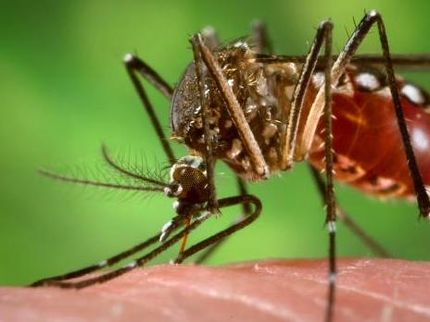Sequencing of cacao genome will help US chocolate industry, subsistence farmers
U.S. Department of agriculture (USDA) scientists and their partners have announced the preliminary release of the sequenced genome of the cacao tree, an achievement that will help sustain the supply of high-quality cocoa to the $17 billion U.S. chocolate industry and protect the livelihoods of small farmers around the world by speeding up development, through traditional breeding techniques, of trees better equipped to resist the droughts, diseases and pests that threaten this vital agricultural crop.
The effort is the result of a partnership between USDA's Agricultural Research Service (ARS); Mars, Inc.; scientists at IBM's Thomas J. Watson Research Center in Yorktown , N.Y.; and researchers from the Clemson University Genomics Institute, the HudsonAlpha Institute for Biotechnology, Washington State University, Indiana University, the National Center for Genome Resources, and PIPRA (Public Intellectual Property Resource for Agriculture) at the University of California-Davis. Team leaders from USDA included molecular biologist David Kuhn and geneticist Raymond Schnell, both at the ARS Subtropical Horticulture Research Station in Miami, Fla., and ARS computational biologist Brian Scheffler at the Jamie Whitten Delta States Research Center in Stoneville, Miss.
"Because of the talent and dedication brought together by this unique partnership, researchers and plant breeders will be able to accelerate the genetic improvement of the cacao crop now cultivated in tropical regions around the world," said Edward B. Knipling, ARS administrator. "This will benefit not only the chocolate industry, but also millions of small farmers who will be able to continue to make their living from cacao."
Cocoa comes from the cacao tree, Theobroma cacao. The tree seeds are processed into cocoa beans that are the source of cocoa, cocoa butter and chocolate. But fungal diseases can destroy seed-bearing pods and wipe out up to 80 percent of the crop, and cause an estimated $700 million in losses each year.
Worldwide demand for cacao now exceeds production, and hundreds of thousands of small farmers and landholders throughout the tropics depend on cacao for their livelihoods. An estimated 70 percent of the world's cocoa is produced in West Africa.
Scientists worldwide have been searching for years for ways to produce cacao trees that can resist evolving pests and diseases, tolerate droughts and produce higher yields. ARS researchers have been testing new cacao tree varieties developed with genetic markers. But having the genome sequenced is expected to speed up the process of identifying genetic markers for specific genes that confer beneficial traits, enabling breeders to produce superior new lines through traditional breeding techniques.
Sequencing cacao's genome also will help researchers develop an overall picture of the plant's genetic makeup, uncover the relationships between genes and traits, and broaden scientific understanding of how the interplay of genetics and the environment determines a plant's health and viability.
Organizations
Related link
Other news from the department science

Get the analytics and lab tech industry in your inbox
By submitting this form you agree that LUMITOS AG will send you the newsletter(s) selected above by email. Your data will not be passed on to third parties. Your data will be stored and processed in accordance with our data protection regulations. LUMITOS may contact you by email for the purpose of advertising or market and opinion surveys. You can revoke your consent at any time without giving reasons to LUMITOS AG, Ernst-Augustin-Str. 2, 12489 Berlin, Germany or by e-mail at revoke@lumitos.com with effect for the future. In addition, each email contains a link to unsubscribe from the corresponding newsletter.























































